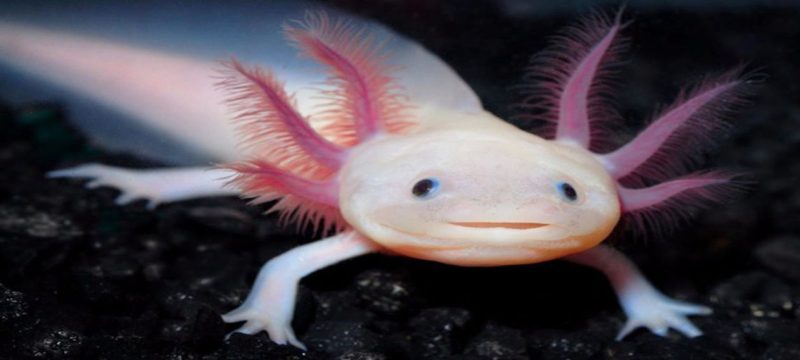The axolotl is one of the most unique and interesting pets you can own. This small water animal looks like a mix between a fish and a lizard, with a permanent smile on its face. People love it because of its cute looks, calm nature, and the fact that it lives fully underwater.
In this blog, we’ll cover everything you need to know before getting an axolotl pet — how to take care of it, what it needs, and why it’s different from other pets.
What Is an Axolotl?
An axolotl is a type of salamander that never fully grows up. Most amphibians go through changes from young to adult. But axolotls stay in their baby-like stage forever. This is called “neoteny.” Because of this, they keep their gills, live underwater all their lives, and look like cute cartoon creatures.
They are native to lakes in Mexico, especially Lake Xochimilco. Sadly, they are nearly extinct in the wild. But people all over the world now keep them as pets.
Why People Love Axolotl Pets
Axolotls are calm and peaceful. They don’t bark or make loud noises. They don’t need to be walked. They stay in one tank and usually mind their own business. Many pet lovers enjoy watching them swim around, float gently, or stay still with their cute smiles.
Here are a few reasons people choose them:
- Unique appearance
- Quiet and low-stress
- Don’t need much space
- Long lifespan (10–15 years)
- Fun to watch
What You Need to Keep an Axolotl
Before you get an axolotl pet, you must set up a proper home for it. These animals are sensitive and need the right conditions to stay healthy.
Tank Size
A single axolotl needs at least a 20-gallon tank. Bigger is always better. They like to move around, and clean water is important. If the tank is too small, waste builds up fast.
Water Temperature
Axolotls like cool water. The perfect range is between 16°C to 18°C (60°F to 64°F). Temperatures above 22°C (72°F) can stress them out and make them sick. You might need a water chiller or a fan if you live in a hot area.
Water Quality
Good water is the most important thing. You’ll need:
- A good filter (but not too strong)
- Regular water changes (around 20% each week)
- A test kit to check ammonia, nitrites, nitrates, and pH
Axolotls are very sensitive to ammonia, so never put them in an uncycled tank.
Substrate (Bottom of the Tank)
Bare bottom tanks are easiest to clean. But if you want to add something, use fine sand. Do not use gravel or stones — axolotls can eat them by mistake and get very sick.
What Do Axolotls Eat?
Axolotls are meat eaters. In the wild, they eat worms, insects, and small fish. As a pet, you can feed them:
- Bloodworms
- Earthworms
- Axolotl pellets
- Small shrimp
Feed them 2–3 times a week when fully grown. Young axolotls eat more often. Don’t overfeed, as it causes health problems and dirties the water fast.
Can You Touch or Hold an Axolotl Pet?
It’s best not to touch your axolotl unless needed. Their skin is very soft and can be harmed easily. Handling them also removes their protective slime coating. If you must move them (for cleaning or health reasons), do so with wet hands or a soft net, and only for a short time.
Axolotl Behavior
Axolotls are not very active during the day. They like to stay still or slowly explore their tank. At night, they move more. Don’t expect them to play or respond like a dog or cat. But many owners say their axolotls recognize them and may swim up when they come close.
They also like hiding spots. You can add small caves, pipes, or plants so they feel safe.
Can You Keep More Than One Axolotl?
You can keep two axolotls in the same tank, but only if:
- They are the same size
- The tank is big enough
- There are hiding spots
Even then, axolotls may bite each other out of curiosity or hunger. Always keep an eye on them. Never mix adults with babies.
Also, don’t keep axolotls with fish. Many fish nibble on their gills, and axolotls may eat the fish by mistake.
Common Health Issues
Like any pet, axolotls can get sick. Here are some signs to watch out for:
- Loss of appetite
- Floating at the top
- Curled tail or gills
- White patches or fungus
- Damage to limbs or gills
Most problems come from poor water quality or high temperatures. That’s why a good filter, regular testing, and a clean tank are very important.
How Much Does an Axolotl Pet Cost?
An axolotl is not very expensive. You can get one for around $20 to $70 depending on its color and age. But the setup will cost more. The tank, filter, chiller, food, and test kits can add up.
Still, compared to many pets, axolotls are affordable and low maintenance once everything is set.
Different Colors of Axolotls
Axolotls come in many colors:
- Wild type – dark green/brown with gold spots
- Leucistic – pale pink with black eyes (most popular)
- Albino – golden or white with red eyes
- Melanoid – all black
- GFP – glow under special light (genetically modified)
These colors don’t affect their behavior or health, but people choose based on looks.
Is an Axolotl Pet Right for You?
If you want a quiet, peaceful pet that’s different from cats, dogs, or birds, the axolotl is a great choice. It’s perfect for people who enjoy watching animals rather than playing with them. You’ll need to stay on top of tank care and water conditions, but in return, you’ll get a long-living, adorable companion.
Final Thoughts
Axolotls are more than just “weird water pets.” They are gentle, smart in their own way, and full of personality. With proper care, your axolotl pet can live a happy life for more than 10 years.
Just remember — they may look like cartoon creatures, but they need real responsibility. If you’re ready to give them the right environment, they’ll be a fun and calming part of your home.
Read More: Yangtze River: History, Facts, Wildlife & Importance







